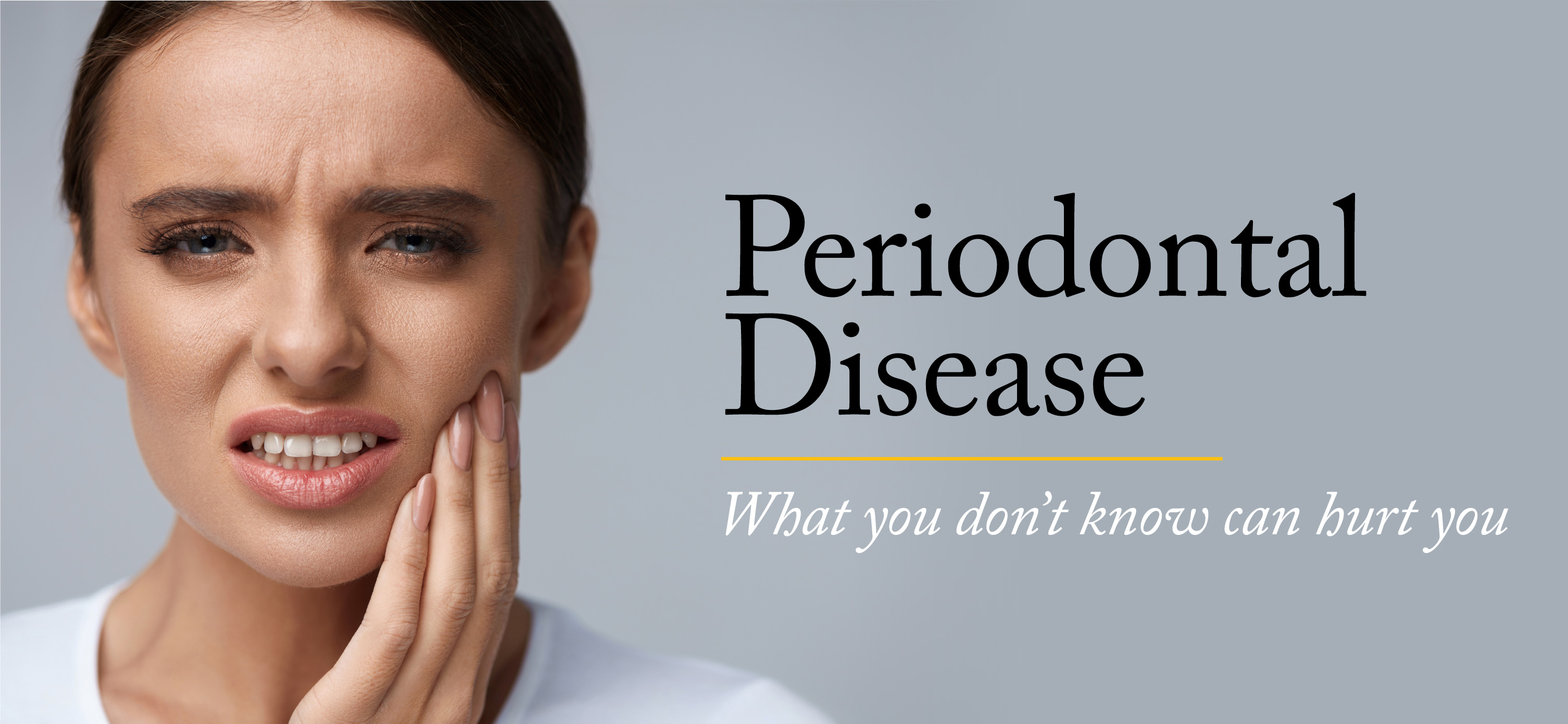Periodontal Disease: What You Don't Know Can Hurt You
7:46 PM

It is estimated that 35.7 million Americans are living with a bacterial infection of the gums known as periodontal disease. This infection attacks the tissue that keeps your teeth attached to your gums.
On average, more than 500 species of bacteria live in your mouth.2 Some of these bacteria are beneficial, while others under the right conditions can cause disease. Living a healthy lifestyle helps you keep the harmful bacteria under control. Not taking care of your overall health and your teeth and gums can cause an overgrowth of harmful bacteria, which may lead to serious health problems beyond the mouth, in addition to the threat of losing your teeth.
35.7 million Americans are living with a bacterial infection of the gums known as periodontal disease
Factors that predispose people to gum disease include bad oral hygiene and genetics. In fact, research has proved that up to 30% of the population may be genetically predisposed to gum disease.3
Periodontitis, a severe form of periodontal disease, is caused by plaque that develops just below the gum line, in the area called the sulcus or periodontal pocket, where it causes the attachment of the tooth and its supporting tissues to break down. The mildest form of periodontal disease is known as gingivitis and is triggered by bacterial plaque that forms at the gum line.
What Is Periodontal Disease?
Periodontal disease is an infection of the tissue that supports your teeth. It attacks just below the gum line, where it causes the attachment of the tooth and its supporting tissues to break down.WARNING SIGNS
- Pain in the mouth
- Gums bleed when brushing
- Spaces develop between teeth
- Swollen and tender gums
- Receding gums (exposing the bottom of your teeth)
- Persistent bad breath
- Pus between teeth and gums
- Sores develop
RISK FACTORS
- Tobacco use
- Systemic diseases
- Use of certain types of medicine
- Bridges that no longer fit
- Crooked teeth
- Fillings that have become defective
- Pregnancy
- Oral cancer
If you're showing warning signs, see your Lacey dentist. Mild gum disease may be controlled by routine professional teeth cleanings and more diligent home care. Gingivitis and early periodontitis can be kept under control by your dental team.
Scaling and root planing also may be a step your dentist or hygienist takes to control early to moderate periodontitis. Scaling removes hard and soft deposits of calculus from the crown of the tooth. Root planing smooths away calculus deposits that collect on the root surfaces beneath the gums.1
Local, needle-free methods are available to keep you comfortable during this process. Your dental professional may also choose to perform this treatment one area of your mouth at a time over a series of office visits.
For advanced gum diseases, surgical treatments using local anesthetics may be performed. To reduce the size of gingival pockets, a periodontist folds back the gum tissue and removes the disease causing bacteria. He or she may also reshape the bone and gum, add bone grafts if necessary, and then stitch the tissue back into place.

0 comments